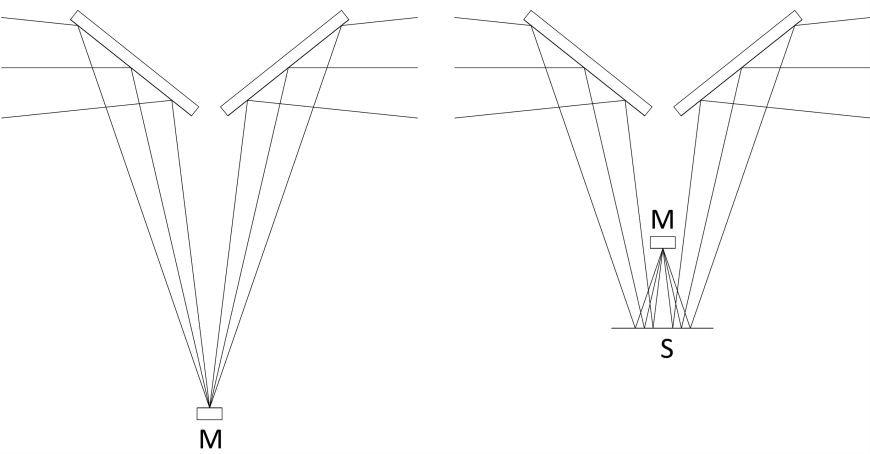 Interview conducted by Olivia FrostOct 20 2021
Interview conducted by Olivia FrostOct 20 2021In this interview, Sue Berets, the Applications Scientist at Harrick Scientific, talks to AZoM about specular reflectance measurements and the difference between absolute and relative.
Please tell us a bit about Harrick Scientific and the work you do?
Harrick Scientific manufactures mid-IR and UV-Vis-NIR spectroscopic accessories and optics for transmission, specular reflection, diffuse reflection, and ATR. My work as an applications scientist at Harrick includes technical support both before and after-sales.
For example, a customer might have a flat reflecting surface and be interested in potential ways to examine it by optical spectroscopy. The most straightforward way to measure this type of sample is by specular or external reflection.
What is specular reflection?
Specular reflection is a mirror-like reflection from a surface. One simple example is the reflection you see in the bathroom mirror. As a spectroscopic method, specular reflection is used to characterize films on reflecting substrates and to measure the optical properties of materials.
For films deposited on a mirror-like substrate, the incident radiation transmits through the film, reflecting from the metal surface and transmitting through the film a second time. This is typically called reflection absorption or double transmission, and the spectra look comparable to transmission spectra. If the film or coating is very thin, smaller than the wavelength, then the greatest sensitivity to the film is at a grazing angle with p-polarized light. Thicker films on substrates can be measured at any angle. The measurements become less sensitive to polarization near-normal incidence (0°).
Specular reflectance is also used to measure free-standing non-reflective films. The reflection from the front and back surfaces generates an interference pattern from which the thickness of the film can be determined.
What's the difference between specular reflection and absolute reflection?
Most spectroscopic measurements are made relative to something. Consider transmission measurements for the simplest case. On a typical FTIR, an open beam spectrum will be collected as a background for transmission measurement. Most UV-Vis-NIR spectrometers are double-beam instruments where the rear beam serves as the reference in a typical transmission measurement, so the sample beam is measured relative to the reference beam.
Most reflection measurements use a mirror or uncoated substrate for reference. This is considered a relative measurement because the spectrum of the sample is measured relative to the mirror or uncoated substrate.
However, absolute reflection methods are employed to accurately measure the reflectance of material to derive the dielectric function and optical constants (n and k). There are several approaches to absolute reflection, all of which employ a polarizer or near-normal incidence.
- Measurement is relative to a calibrated reference followed by mathematical extraction of the absolute reflectance. This is the easiest approach experimentally, but calibrated references can be expensive and need careful handling to retain their calibration.
- The V-W and V-N methods. These methods collect the background or reference spectrum using the exact mirrors at the same angles for the sample spectrum. Then the sample stage is pivoted, and the sample mounted for measurement.
The V-W method measures the square of the reflectance.

V-W Method: The figure on the left shows the "V" or reference position; the figure on the right shows the "W" or sampling position with the sample (S), and that one mirror flipped.
The V-N method measures the reflectance but inverts the beam, introducing potential asymmetric source and detector errors. As a result, the V-W method is generally preferred over the V-N method.

V-N Method: The figure on the left shows the V or reference position; the figure on the right shows the sampling position with the sample in position, and the reference mirror position flipped.
What benefit does this add?
Can you give us any sample studies?
There are many applications detailed in the scientific literature. Three examples are discussed below, with the intent of also providing more information on the method.
It was mentioned above that p-polarization at grazing angle gives the highest sensitivity for thin films. This is easily demonstrated by examining a thin material coating, like a 700 Å of SiO, on a front-surface aluminum mirror. With perpendicular polarization, the SiO bands are not apparent. With parallel polarization, the SiO band is strongest at high angles. For more details, see Selection of the Optimum Parameters for Thin Films on Smooth Metal.
Near-normal incidence is frequently used to determine the optical constants of materials. Normal incidence is experimentally more accessible because it is relatively insensitive to polarization, so no polarizer is required. At near-normal incidence, for all practical purposes, the incident angle can be assumed to be 0° which simplifies the relationship of the optical constants to the measured values through the Fresnel equations. This is routinely carried out using the Kramers-Kronig (KK) transform. Using the Kramers-Kronig Method to Determine Optical Constants and Evaluating its Suitability as a Linear Transform for Near-Normal Front-Surface Reflectance Spectra reviews the method and extracts the optical constants for Plexiglas and water.
Having discussed the differences between absolute reflectance and relative reflectance, it would be remiss not to include a standard comparison between the absolute reflectance and relative reflectance measurements. Three materials are studied in Comparison of Absolute Reflectance Methods: VW vs. Reflectance Relative to a Standard and comparable results are obtained using both methods.
Where can our readers go to find out more?
Specular reflection is discussed in most texts on spectroscopy and many spectroscopic studies have been carried out using polarizers. Some useful references include:
- J. A. Mielczarski, M. Milosevic, and S. L. Berets, "Optical Properties of Strongly Absorbing Media Determined by External Reflection Spectroscopy," Appl. Spectrosc. 46, 1040-1044 (1992)
- S. L. Berets and Milan Milosevic, "Extracting Infrared Absolute Reflectance from Relative Reflectance Measurements," Appl. Spectrosc. 66(6), 680-684 (2012)
- The Influence of Refractive Index on the Efficacy of Absolute Reflectance References
- Wesley Wm. Wendtlandt, Harry G. Hecht: Reflectance Spectroscopy, John Wiley and Sons, New York, 1966.
- G. Kortum: Reflection Spectroscopy: Principles, Methods, Applications, Springer-Verlag New York Inc., 1969.
- P. R. Griffiths, J. A. de Haseth: Fourier Transform Infrared Spectroscopy, J. Wiley & Sons, New York 1986
- F. M. Mirabella (ed.): Modern Techniques in Applied Molecular Spectroscopy, J. Wiley & Sons, New York 1998.
About Sue Berets
Sue received a B.A. in chemistry with a minor in mathematics from Wellesley College, followed by a Ph.D. in chemistry from Tufts University. After receiving a Ph.D., Sue joined Harrick Scientific as an applications scientist. Sue's work includes technical support; testing customer samples to make recommendations for suitable equipment to fulfill the applications requirements, assisting in equipment set up, and writing technical documentation.
In addition, Sue provides operating tips to customers to optimize the performance of their equipment for their application. Sue is also involved in applications and new product research and development.
About Harrick Scientific
Since its beginnings in 1969, Harrick Scientific has advanced the frontiers of optical spectroscopy through its innovations to transmission, internal reflection, external reflection, diffuse reflection, and emission spectroscopy. Harrick Scientific offers a large selection of standard and custom-built accessories for IR , Raman and UV-VIS spectrometers.
Located in Pleasantville New York, we are proud to build upon the the important work of our founder, Dr. N.J. Harrick.
Disclaimer: The views expressed here are those of the interviewee and do not necessarily represent the views of AZoM.com Limited (T/A) AZoNetwork, the owner and operator of this website. This disclaimer forms part of the Terms and Conditions of use of this website.